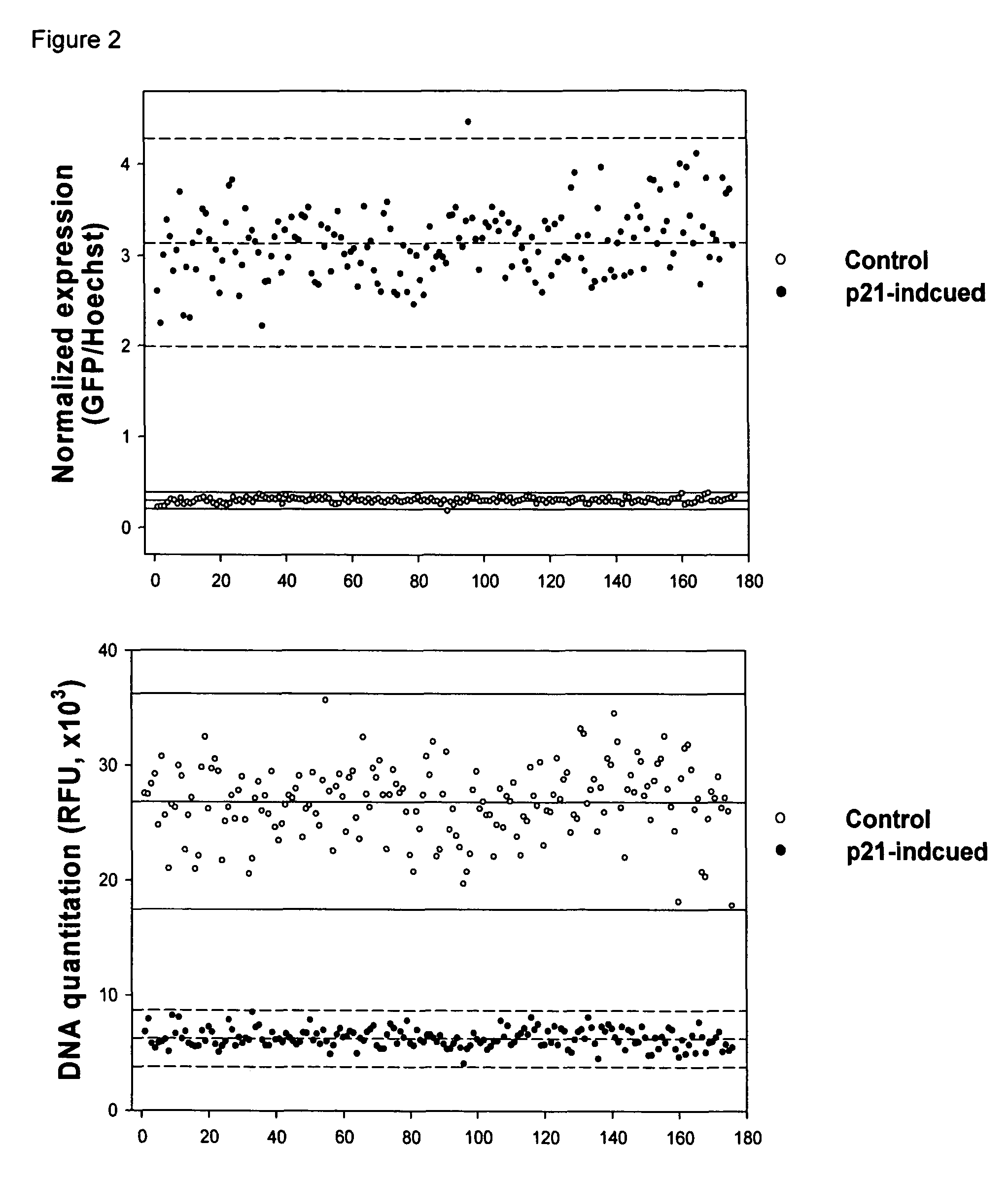High-content screening for drugs against cancer and age-related diseases
a cancer and age-related disease technology, applied in the field of discovery of drugs, to achieve the effect of rapid and efficient identification and modulation of the effect of cell cycle arres
- Summary
- Abstract
- Description
- Claims
- Application Information
AI Technical Summary
Benefits of technology
Problems solved by technology
Method used
Image
Examples
examples
Screen
[0044]A line of HT 1080 human fibrosarcoma cells with IPTG-inducible p21 (HT1080 p21-9) (Chang et al., Oncogene 18:4808-4818, 1999) was infected with a self-inactivating (SIN) lentiviral vector that expresses GFP from a p21-responsive cytomegalovirus (CMV) promoter. A GFP-positive cell population was isolated by FACS, and individual clonal cell lines were derived from this population. IPTG was added to the cells to induce the expression of p21, and a cell line showing the strongest increase in GFP expression upon the addition of IPTG was selected for screening compounds that modulate the transcriptional effect of p21.
[0045]For screening test compounds, cells are plated into two sets of 96-well FluoroNunc plates. The IPTG set receives 2000 cells per well in 100 μl medium containing 100 μM IPTG and the control set receives 1000 cells per well in 100 μl medium without IPTG. Cells are allowed to attach to the plates for 3 hours before 10 μl of each diluted compound is added to the...
PUM
| Property | Measurement | Unit |
|---|---|---|
| fluorescent | aaaaa | aaaaa |
| green fluorescent | aaaaa | aaaaa |
| total cell mass | aaaaa | aaaaa |
Abstract
Description
Claims
Application Information
 Login to View More
Login to View More - R&D
- Intellectual Property
- Life Sciences
- Materials
- Tech Scout
- Unparalleled Data Quality
- Higher Quality Content
- 60% Fewer Hallucinations
Browse by: Latest US Patents, China's latest patents, Technical Efficacy Thesaurus, Application Domain, Technology Topic, Popular Technical Reports.
© 2025 PatSnap. All rights reserved.Legal|Privacy policy|Modern Slavery Act Transparency Statement|Sitemap|About US| Contact US: help@patsnap.com



